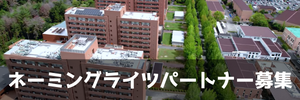(English announcement can be found in the latter half of this notice.)
広島大学バイオマスプロジェクト研究センターと中国地域バイオマス利用研究会の共催で広島大学バイオマスイブニングセミナーを開催しています。バイオマスに関する基本的な考え方から最先端の情報までをカバーして、この地域におけるバイオマスの活動に資することを目的とするものです。第64回を以下の日程で開催しますので、ご参集下さい。
日時 2018年5月7日(月)16:20~17:50
会場 広島大学東広島キャンパス工学部110講義室
https://www.hiroshima-u.ac.jp/eng/access/lectureroom
https://www.hiroshima-u.ac.jp/eng/access/building
https://www.hiroshima-u.ac.jp/access/higashihiroshima
プログラム
解説 広島大学大学院工学研究科 教授 松村 幸彦
講演 広島大学大学院先端物質科学研究科 M1 伊地 修平
「海洋性メタン発酵法による含塩有機廃棄物の処理検討」
メタン発酵法は、微生物を利用しエネルギー資源であるメタンを生産する技術です。現在、新バイオマスとして注目されてきている高塩有機物は、水分量が多くメタン発酵によるエネルギー回収が適していますが、塩分によってメタン発酵が阻害されます。当研究室ではそれらの有機物の処理に海洋底泥が有用であると見出しました。本研究では、高塩有機物への海洋底泥中微生物の適用可能性を検討しました。これにより、味噌などの高塩有機物でも問題なくメタン生成が行えました。
講演 広島大学大学院工学研究科 M2 市原 悠人
「水熱処理と触媒による藻類バイオマスの分解生成物」
藻類バイオマスは膨大な賦存量、カーボンニュートラル、貯蓄性があるバイオマスです。しかし水熱処理による藻類バイオマスの分解生成物はまだ解明されていません。そこで本研究では藻類バイオマスであるクロレラとスピルリナをオートクレーブと触媒を用いて水熱処理をしました。滞留時間は60分で固定し温度を200℃, 250℃, 300℃の三条件、触媒は触媒無し、硫酸、水酸化カリウムの三条件、計九条件で実験を行いました。回収サンプルのうちガスサンプルはガスクロマトグラフィー(GC)、液相は元素分析装置(CHNS)、固相は走査型電子顕微鏡(SEM)を用いて観察しました。水熱処理後、触媒のKOH、300℃においてどちらのバイオマスも最も細胞が破壊されていることが確認できました。
講演 広島大学大学院工学研究科 D2 Rahmat Iman MAINIL
「超臨界水中のレトロアルドール変換機構」
超臨界条件下でのモデル化合物としてのバイオマスの挙動に関する研究の大部分は、まだ未知の全有機炭素(TOC)が残っていると説明されている不明確なメカニズムを残しています。シンプルなモデル化合物としてのグリセルアルデヒドは、熱い圧縮水の下でのキシロースの分解において見出される主要生成物と考えられているレトロアルドール生成物の詳細なメカニズムを理解するために利用することができます。この研究では、グリセルアルデヒドを脱イオン水に溶解し、連続反応器内で350〜450℃の温度範囲で25MPaで加熱しました。液体流出物中のコンパンドを同定するために、高性能液体コモグラフィーを用いました。この研究で観察された中間体はレトロアルドール生成物(グリコールアルデヒド、ホルムアルデヒド、ジヒドロキシアセトンおよびアセトアルデヒド)でした。反応速度論は、すべての反応が一次であると仮定して決定しました。 Arreheniusの挙動は、反応をフリーラジカル反応(超臨界領域におけるアレニウス反応を示す)およびイオン反応(超臨界領域におけるアレニウス反応を示さない)として分類するために用いられました。
講演 広島大学大学院工学研究科 M1 横山 裕生
「ディスクミルを用いた水熱粉砕前処理時に発生する発酵阻害物質の特定と定量」
今回の研究の目的は,水熱粉砕前処理時に得られる液相中に溶解していると考えられる発酵阻害物質の特定と定量です。今回の研究に使用した試料は初期粒径1.0-2.0, 2.0-2.8, 2.8-3.3, 3.3-4.0 mmのユーカリを130 ℃,100 rpmで前処理を行ったものでした。得られた液相は高速液体クロマトグラフィーによって分析しました。その結果,発酵阻害物質として醋酸,ギ酸が微量計測されました。
司会 広島大学大学院工学研究科 教授 松村 幸彦
なお、18:00より意見交換会(参加費 800円)を開催します。ご都合の付く方はこちらにもご参加下さい。
The 64th Hiroshima University Biomass Evening Seminar
(The33rd Hiroshima University ACE Seminar)
Biomass Project Research Center, Hiroshima University, and HOSTY Association are co-organizing the Hiroshima University Biomass Evening Seminar. This seminar covers topics from the fundamentals of biomass to the latest information so that it can contribute the activities on biomass in this district. The 64th seminar will be held as follows. Please join.
Date & Time: Mon.7 May., 2018 16:20-17:50
Place: Engineering 110 Lecture Room, Higashi-Hiroshima Campus, Hiroshima University
https://www.hiroshima-u.ac.jp/eng/access/lectureroom
https://www.hiroshima-u.ac.jp/eng/access/building
https://www.hiroshima-u.ac.jp/access/higashihiroshima
Program
Commentary: Yukihiko MATSUMURA
Professor, Graduate School of Engineering, Hiroshima University
Lecture: Shuhei IJI
M1 Student,Graduate School of Advanced Sciences of Matter, Hiroshima University
“Processing of high salinity organic with marine sediment”
High salinity organic matter is a promising feedstock for anaerobic digestion (methane fermentation) that is a technology producing methane from organic matter using microorganisms because it contains high water content. We found that marine sediments are useful microbial resource for anaerobic digestion of high salinity organic matter because of their salt tolerance. In this study, possibility of microorganisms in marine sediment to high salinity organic was investigated. As the result, it was suggested that anaerobic digestion was successful in various food industry wastes such as Miso.
Lecture: Yuto ICHIHARA
M2 Student,Graduate School of Engineering, Hiroshima University
“Decomposition product from algal biomass by hydrothermal treatment and the effect of catalyst”
Algal biomass has a huge amount, carbon neutral and storage. But the decomposition product from algal biomass hasn’t been reported. That’s why the purpose of this study is to indicate the decomposition product of Chlorella vulgaris and Spirulina as algal biomass treated by hydrothermal treatment and catalyst. The experimental condition, residence time was set at 60 min, temperature was 200, 250 and 300 ℃, catalyst was no catalyst, H2SO4, KOH. In the sample, gas sample was analyzed by GC, liquid sample was analyzed by CHNS, and solid sample was observed by SEM. After treatment, the cells of these biomasses were most destroyed under 300 ℃, KOH.
Lecture: Rahmat Iman MAINIL
D2 Student, Graduate School of Engineering, Hiroshima University
“ Mechanism of Retroaldol Conversion in Supercritical Water ”
Most of studies about behaviour of biomass as model compound under supercritical condition still leave some unclear mechanism which were explained by unknown total organic carbon (TOC) remained. Glyceraldehyde as a simple model compound can be utilized to understand the detail mechanism of retro aldol products which were believed as major products found in decomposition of xylose under hot compress water. In this study, glyceraldehyde was dissolved in deionzed water and then heated in the temperature range of 350-450 °C at 25 MPa in a continous reactor. High-performance liquid comatography was used to identify componds in the liquid effluent. The intermediates observed in this study were retro-aldol products (glycolaldehyde, formaldehyde, dihydroxyacetone, and acetaldehyde). The reaction kinetics were determined by assuming all reaction are first-order. Arrehenius behaviour was used to classify the reaction as free-radical reactions (showing Arrehenius behaviour in supercritical region) and as ionic reactions (not showing Arrehenius behaviour in supercritical region).
Lecture: Hiroki YOKOYAMA
M1 Student,Graduate School of Engineering, Hiroshima University
“Specification and Quantitation of Fermentation Inhibitor for Hydrothermal Pulverization Pretreatment Using Disk Mill ”
The objective of this research is specification and quantitation of fermentation inhibitor in the liquid sample that was obtained by hydrothermal pulverization pretreatment. This pretreatment was conducted using 1.0-2.0, 2.0-2.8, 2.8-3.3, 3.3-4.0 mm particles of eucalyptus. The liquid samples were analyzed by high performance liquid chromatography and I checked acetic acid and formic acid was detected.
Chair: Yukihiko MATSUMURA
Professor, Graduate School of Engineering, Hiroshima University
We will hold the discussion meeting from 18:00 (800 JPY needed). Join this meeting, too if you are available.


 Home
Home









